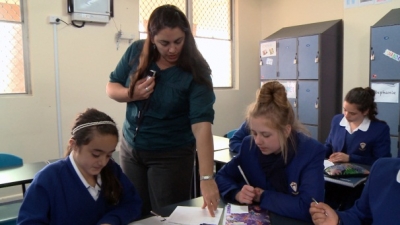High school
Finding your way around our updated education website content
There are three main categories that provide focused points of reference: accessible media for diverse learners, hearing impairment and deafness and low vision and blindness.
Top of page
CAP THAT!
CAP THAT! is an initiative of Media Access Australia with a dedicated website developed to raise awareness nationally of the need for teachers to turn on captions in the classroom.
Top of page
Teacher information (hearing)
Teachers work with a diverse range of student needs, learning styles and a curriculum that presumes the use of audiovisual/multimedia content.
It is vital that teachers who have students who are Deaf or have hearing impairment in their classrooms create an equitable educational environment through the use of inclusive teaching practices.
Top of page
Hearing Awareness Week approaches with the promise of resources for teachers
HAW has activities planned around the country. To start the ball rolling is the Australian Hearing Hub Open House this Saturday 23rd August, to raise awareness about healthy hearing and the services available at the Australian Hearing Hub.
Top of page
Teacher information (vision)
It is vital that teachers with students who are blind or have low vision in their classrooms can create an equitable educational environment through the use of accessibility practices.
Top of page
Classroom Access Project 2
Classroom Access Project 1
The Classroom Access Project was first piloted in Term 1, 2010 at La Salle Catholic College, Bankstown, NSW. This project was an initiative of Media Access Australia, and implemented through partnership with the Catholic Education Office Sydney and La Salle Catholic College, Bankstown.
Top of page
The ‘model classroom’ in action
The Classroom Access Project (CAP) operated for 20 weeks in both trial schools, which provided necessary longevity to test the concept of access to captioned video and other media and improved sound in mainstream schools.
Top of page
Classroom Access Project
Access to captioned video and other media for students with hearing impairment can be challenging due to the increased use of online curriculum resources to support the curriculum, and also a need to upskill teachers in the use of captions.
Top of page



